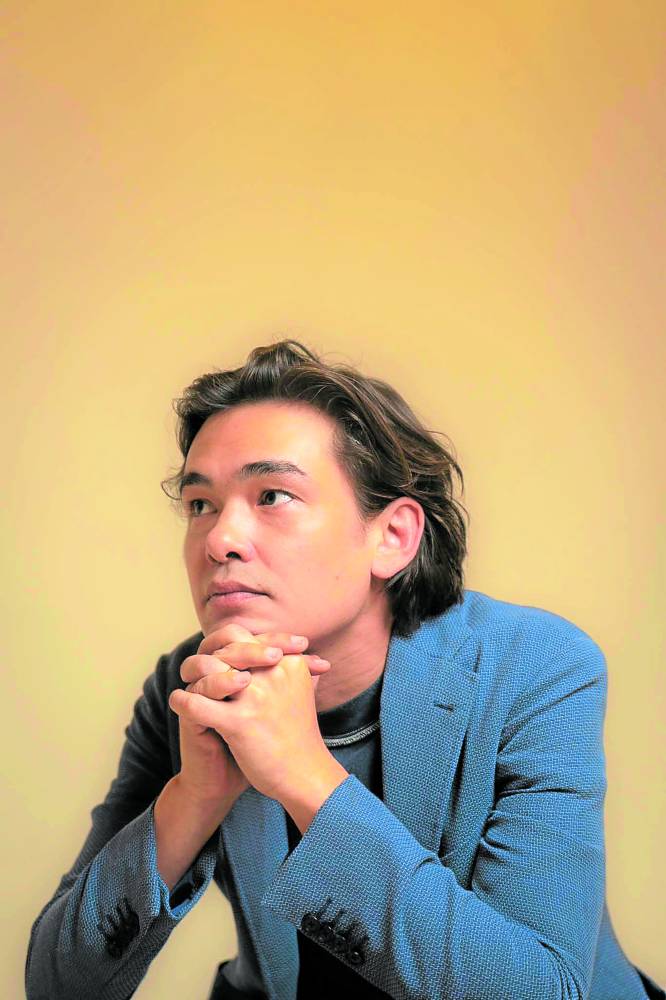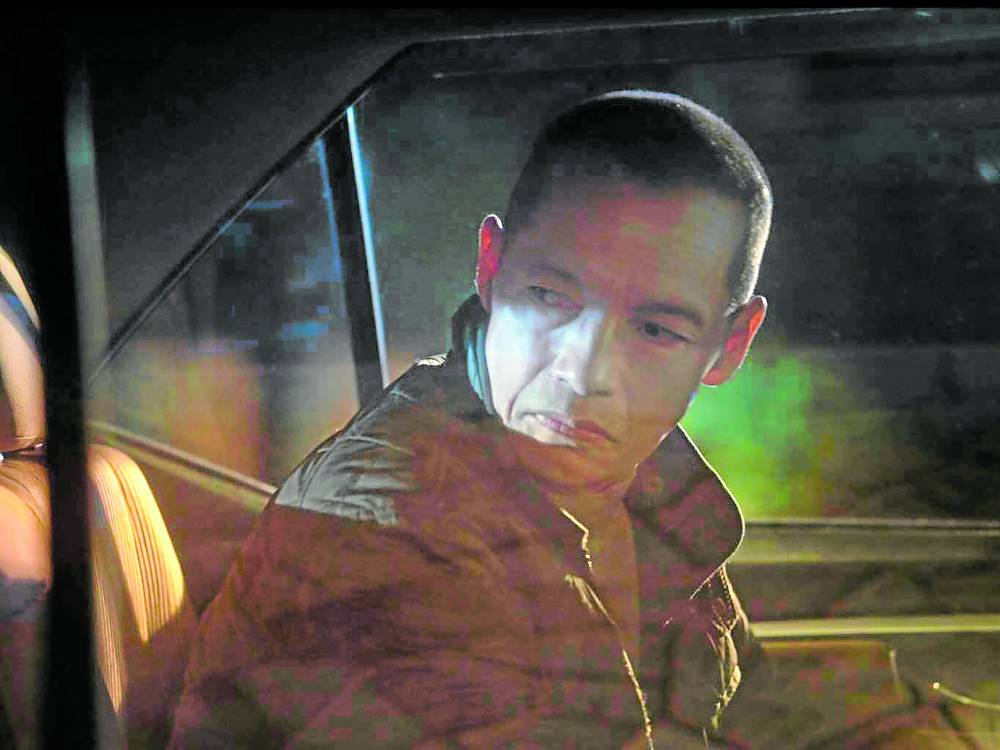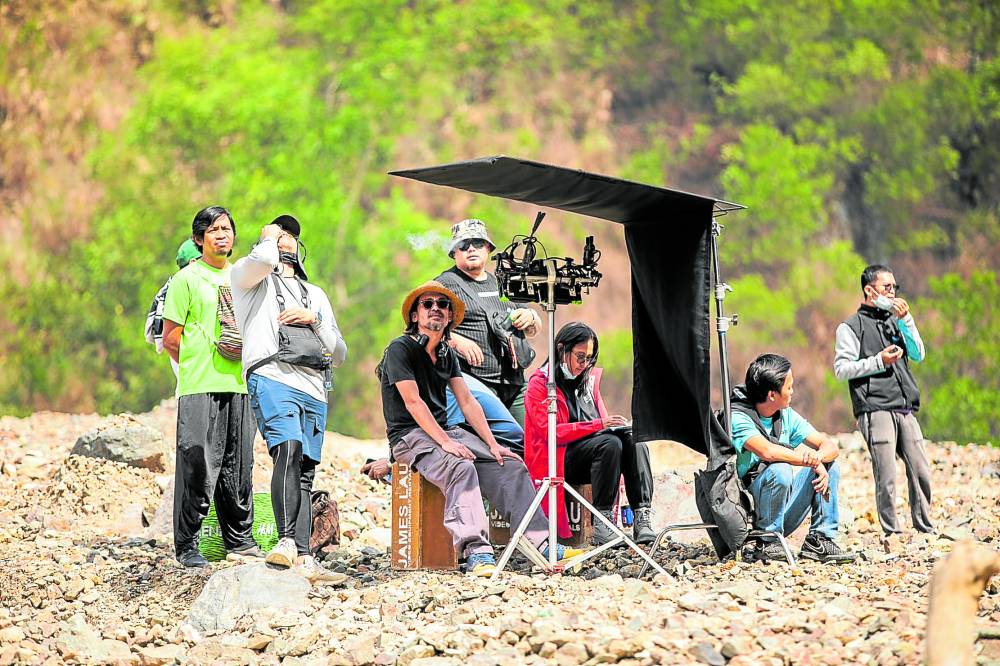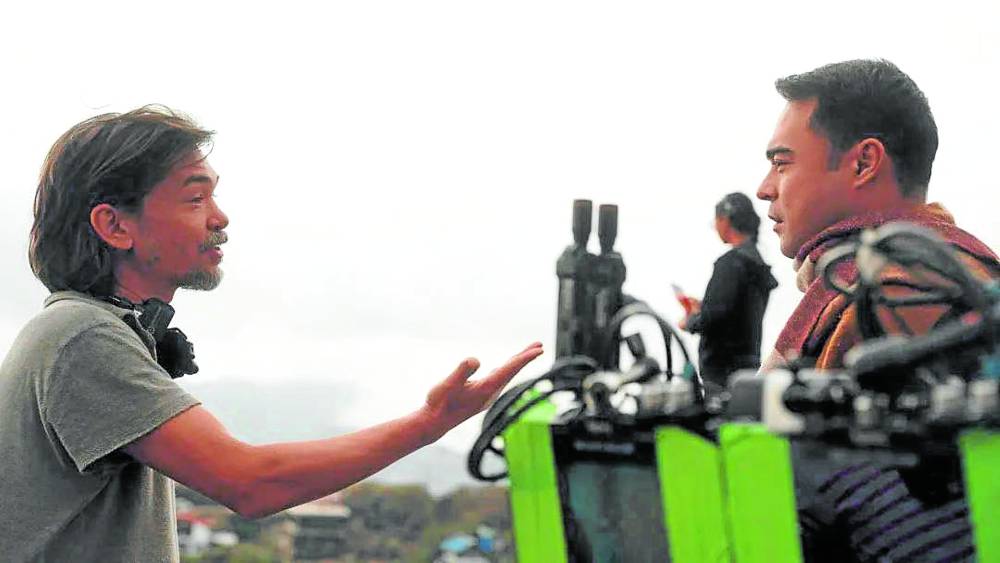Nothing articulates “An Errand’s” deep-seated existentialist musings better than the subtle, almost imperceptible changes taking place inside its lead character Moroy’s (Sid Lucero) head. You won’t see him expressing a lot of contrived or “indicating” emotions, but with Sid letting his time-honed gravitas and astute acting choices work for him, you feel an upheaval bubbling under the surface.
“An Errand,” helmed by debuting full-length filmmaker Dominic Bekaert for Cinemalaya (whose run starts today), isn’t going to be every moviegoer’s cup of cinematic tea. But the astutely framed and stunningly photographed (by Steven Paul Evangelio) production nevertheless elevates the filmgoing experience by refusing to dumb down its viewers as it follows Iloilo-born personal driver Moroy while he makes his way down from Baguio to Manila to pick up items left by his mysterious employer, only referred to as Sir (Art Acuña).
As Moroy’s mind shuttles between fantasy and reality in stream-of-consciousness style, we are then shown a series of vignettes inhabited by a rich pool of well-played characters—including Sir’s mistress Brenda (Elora Españo) and drivers Mang Ben (Nanding Josef) and Rex (Eric Kelly), whose personal tales end up informing Moroy’s choices in the film’s ensuing denouement.
We should also note that casting Sid as Moroy was a masterstroke because it’s the kind of role that requires its actor to imbue so much even with minimal dialogue. We did wish for a little more backstory that would help us understand his mindset better—although this is later explained by the director’s partiality to “postwar film noir characters.”
The fact that Dominic’s dramatic mind-bender bravely wraps up its intriguingly nonlinear exposition in less than one hour and 30 minutes is a feat in itself—another “road less traveled” in an industry where “overexpressing” or overexplaining oneself is par for the course. That said, the film does require focus and attentiveness for viewers to fully appreciate a payoff worthy of its earnestly calibrated setup.
While “An Errand” may not play out in deus ex machina fashion, as many “spoon-feeding” narratives are wont to do these days, Dom told us that there’s good reason behind his idiosyncratic approach to storytelling.
“Yes, this [style or tone] was absolutely deliberate and a strong reason for my attraction to the project,” the Filipino-French director told us last week. “I’m a dreamer and, as such, I’ve always been more inclined to follow the road of poetry more than the road of logic and reality.
“The essence of the art form is to create suspension of disbelief in order to relinquish logic and reality for the duration of the film. So I felt like the stream of consciousness route was the most efficient to get the story through.
“My love for this kind of structure might come from one of the first movies my mother showed me. It was ‘An Andalusian Dog” by Luis Bunuel, the famous Spanish surrealist director who became one of my favorite cineastes.
“As for the denouement, I feel that giving a nice bow tie resolution at the end is almost like giving the audience permission to forget the movie. I wanted the character to stay with the audience without him weighing on them.”
We’ve taken note of Dominic’s storytelling skills after we saw how he made “Wildest Dreams,” Nadine Lustre’s tantalizing visual album, come to palpable, potent life in 2020. We even saw footage of Dom’s visually stunning historical short, starring Sid and Miguel Hernandez, the following year.
Asked what adjustments he had to make for “An Errand’s” full-length route, he said, “You have to remind yourself every day that you’re running a marathon, not a sprint. To be able to lead people, you need to keep that energy going for a long time. It takes some adjusting, but with the amazing team we had, it was a breeze.
“With music videos, due to their promotional nature, you need to capture the audience with mood and wrangle them through with editing and effects. Most of the talents you’ll work with are not actors, so you heavily rely on technique, which taught me a lot about production value.
“For this movie, the structure is crafted around the story and its characters. So the actors are your main trump cards and you’re building the movie around them and the story that’s unfolding. As this particular tale is about an interior journey, I needed to dial down on the visual effects and create something that slowly tunnels into the heart of the characters—it’s scary but fascinating to do.
“As for the full-length aspect of it, I feel like we needed the time to show the minute progressions inside of the main character’s soul and give him space to unveil the different layers that [writer] Sarge Lacuesta put in the script.”
The rest of our Q&A with Dominic:
You have gathered a fine ensemble of actors (Sid, Art, Nanding, Elora, even Max Eigenmann in a two-in-one cameo). But the film really plays well to Sid’s strengths as an actor and, more importantly, his gravitas. How did you pitch this to Sid?
We live in the same village and became close friends during the pandemic. We built a wonderful working relationship on a short film, and we felt ready to push it further. When [Sid] gets a character, he really dissects it and puts so much of himself into it.
Moroy is the Scarlett O’Hara of our movie, he’s in every scene. But contrary to “Gone With the Wind,” he has very little lines and is all about observation and reaction.
One of the hardest things for an actor is to do nothing in front of a camera, but still have so much going on inside. [Sid] is one of the few who can pull it off naturally. For me, he is up there with the greats for this type of acting, like Clint Eastwood or Marcello Mastroianni or Peter Sellers in “Being There.”
How did this story come about, and what was it about this tale that you felt needed to be told?
I met Sarge Lacuesta while heading what was then called the National Film Archives of the Philippines. Five years ago, he was about to publish a book of his stories made into comics and asked me to take pictures for a “fumetti” (Italian style comic with pictures, instead of drawings) fortunately entitled “Cinema.”
As talent fee, I requested for him to transform one of his short stories into a full-length script that I could direct … which he surprisingly agreed to do. As a film director who is half-Filipino and half-French, what appealed to me about the story is that I have always been fascinated by class divides and how we deal with them as individuals and as societies.
The relationship of a driver and his boss offers a unique lens through which to examine the intimacy that can exist across seemingly insurmountable divides. This closeness transcends a mere business association—it offers the driver an unfiltered and unadulterated glimpse into his boss’ life. The film builds up to offer a microcosmic view of the broader human experience.
How did Moroy’s “issues” resonate with you?
Moroy was a character straight out of my favorite kind of literature, similar to Meursault in Albert Camus’ “The Stranger” or Josef K. in [Orson Welles’ adaptation of] Kafka’s “The Trial.” These are characters I’ve always had a lot of care and rooted for. They seem to not fit their environment. There is something wrong inside of them—they know it, but don’t have the tool kit to fix it.
Moroy’s struggle to find a sense to his existence and not accept his lot in life is something I find to be universal. He also reminds me of the postwar film noir characters who don’t have a past or a future, but you stick to them like gum to a shoe.
What do you wish viewers to take away from “An Errand”?
I wish every viewer to find his or her own meaning and it would be wrong to try and direct them as, on their own, they stumble onto amazing things that I didn’t even know were there in the first place.
On my end, the film reminds me of this quote from Carl Jung that has always stayed with me: “Who looks outside, dreams; who looks inside, awakes.”
What was it about creating this film that you found most challenging?
I wanted this bigger team and set up to remain as nimble and adaptable as when we made music videos. To get there, we created a very collaborative and inclusive space for the whole crew and everyone played the game. I’m really excited by the idea of creating a little troupe of actors and technicians that are like-minded and keep on working with them to get more and more precise in our craft.
Between making music videos/shorts and full-length, which do you find more satisfying?
Music videos are a fantastic space to get budget to experiment, push concepts and try out very different things. Making films is the condensation of your experiences into a personal voice. I have a lot of fun with music videos, but I feel that I grow artistically by making movies. I find out more about myself at the end of the process.
Given your unique vision as a filmmaker, which directors do you look up to?
So many! I live, breathe and eat Cinema. On the local side, it’s Gerry de Leon, Eddie Romero, Lamberto Avellana, Ishmael Bernal, Lav Diaz, John Torres, Khavn dela Cruz, Kidlat Tahimik and, of course, the two greats, Mike de Leon and Lino Brocka.
On the international side, it’s Luis Bunuel, Jacques Tati, Yasojiru Ozu, Wim Wenders, Jim Jarmusch, Claire Denis, Theo Angelopoulos, Abbas Kiarostami, Stanley Kubrick … there are too many to mention! And they keep on changing depending on the mood.







